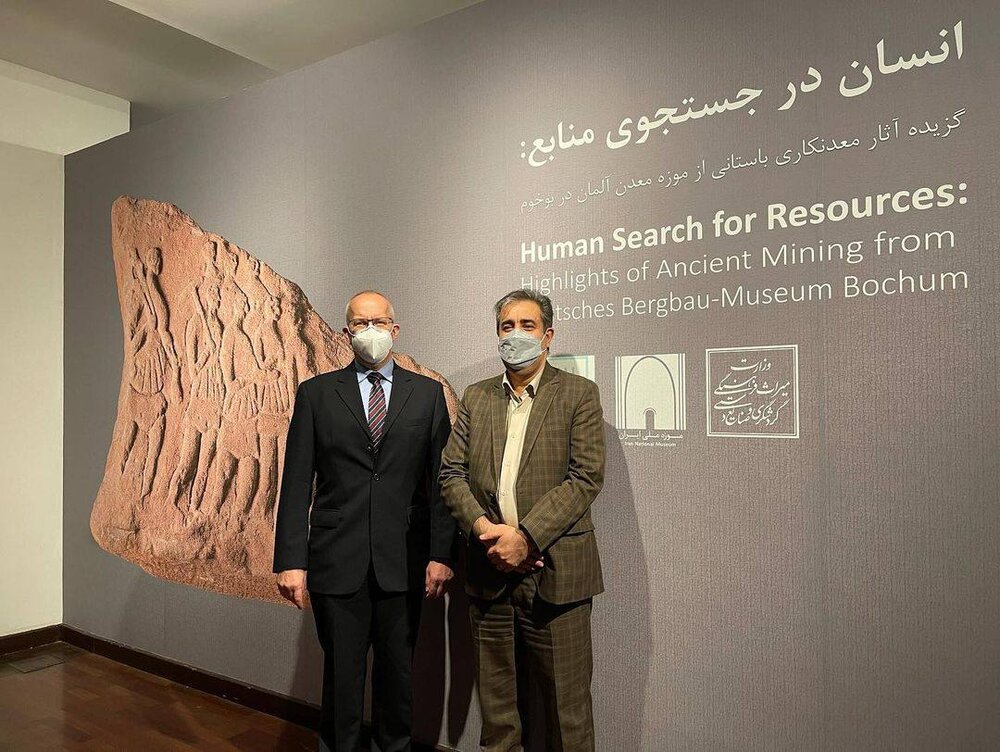German mine relics returned home after major Iran exhibit

TEHRAN – A collection of relics, which was on loan from the German Mining Museum at a major Tehran exhibit, has recently been returned home.
The exhibit titled “Human Search for Resources” was held at the National Museum of Iran from November 3, 2021, to January 14 in parallel with an Iranian exhibition of ancient mining named "Death by Salt".
The German show put the spotlight on the appropriation of humans to mineral resources and the development of the history of human experiences and achievements in mining, which led to the development of technologies, the formation of professions, trade, and specialization of industries.
"Death by Salt" showcased arrays of personal objects, tools, and corpses once belonging to the famed Iranian salt mummies discovered in the Chehrabad Salt Mine of Zanjan province.
Last year, a team of experts from the two countries started a project for purifying, cleansing, and restoring garments and personal belongings of the mummies which were first found in the salt mine in 1993.
What was a catastrophe for the ancient miners has become a sensation for science. Sporting a long white beard, iron knives, and a single gold earring, the first salt mummy was discovered in 1993. He is estimated to be trapped in the mine in ca. 300 CE. In 2004 another mummy was discovered only 50 feet away, followed by another in 2005 and a “teenage” boy mummy later that year.
The oldest-known mine on archaeological record is believed to be the Ngwenya Mine in Eswatini (Swaziland), which radiocarbon dating shows to be about 43,000 years old. At this site, Paleolithic humans mined hematite to make the red pigment ochre. Moreover, mines of a similar age in Hungary are believed to be sites where Neanderthals may have mined flint for weapons and tools.
The National Museum of Iran is somewhat chock-full of priceless relics that represent various eras of the country’s rich history. Massive and tiny statues, ceramics, potteries, stone figures, bas-relief carvings, metal objects, textile remains, rare books, and coins are amongst objects that build up the innumerable collections inside.
AFM
